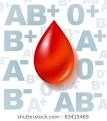KMC Doctors First to Identify a Rare Blood Group ‘P Null’ Phenotype in India
Prof.Dr.Dram,profdrram@gmail.com,Gastro Intestinal,Liver Hiv,Hepatitis and sex diseases expert 7838059592,9434143550
 A team of doctors led by Dr. Shamee Shastry from the blood bank of Kasturba Medical College, Manipal identified a rare blood group called ‘pp’ or ‘P null’ phenotype. ABO and Rh D are the commonly typed blood group systems. However, there are more than 200 minor blood group antigens known besides A, B and Rh. A blood type is considered rare if fewer than 1 in 1,000 people have it. A person is said to have rare blood group when he lacks the high-frequency antigen or multiple common antigens.
A team of doctors led by Dr. Shamee Shastry from the blood bank of Kasturba Medical College, Manipal identified a rare blood group called ‘pp’ or ‘P null’ phenotype. ABO and Rh D are the commonly typed blood group systems. However, there are more than 200 minor blood group antigens known besides A, B and Rh. A blood type is considered rare if fewer than 1 in 1,000 people have it. A person is said to have rare blood group when he lacks the high-frequency antigen or multiple common antigens.
The Blood Bank at Kasturba Hospital received samples from a patient who required urgent blood transfusion. The doctors were unable to find a compatible blood unit even after cross-matching with more than 80 units. Extensive immunohematology workup was performed by the blood bank team and further for confirmation, samples were referred to the International Blood group Reference Laboratory (IBGRL), Bristol, UK for serological testing. With the help of a reference laboratory, it was confirmed that the patient’s cells had the rare ‘pp’ phenotype.
Dr. Poornima Baliga, Pro-vice chancellor of faculty of health sciences, MAHE said that it was for the first time P blood group null phenotype has been detected in India, and she supported the Blood Bank’s initiative to build rare donor registry for the region.
Dr. Shamee Shastry, professor and head of the department of Immunohematology and Blood Transfusion said, “The patient had a very rare ‘P null’ blood group and anti PP1Pk antibody in his blood that has a potential to cause acute intravascular hemolytic reaction to incompatible blood transfusion. Rare donor registry will be of great help in managing such cases. This antibody is also known to cause recurrent abortions in women. Finding compatible unit for such case is a near impossible task without a well-established rare donor panel,” she said.
Dr. Kiran Acharya, Professor of Orthopedics and his team performed blood less surgery (Femur fracture repair) once the patient’s hemoglobin was increased to the desired level using other medications.
- Kidney stones universally present hazard in north india,dillution by water prevent it
- Steroid and placebo effect equally for mild persisting asthma with low sputum eosinophils
- Government wants to fix public healthcare staff shortages with ayush docs: will it work?
- Plea in hc for payment of salaries of edmc, north mcd teachers and doctors
- 7 indian pharma companies named in us lawsuit over inflating generic drug prices
- Woman in up dies after explosion in her mouth during treatment,what is diagnosis?
- Woman in up dies after explosion in her mouth during treatment,what is diagnosis?
- Woman in up dies after explosion in her mouth during treatment,what is diagnosis?
- Air pollution ! mothers organising rally in london,anaesthetist choosing gas,will india follow?
- Cardiac arrest is always not sudden as understood -a study

 Comments (
Comments ( Category (
Category ( Views (
Views (